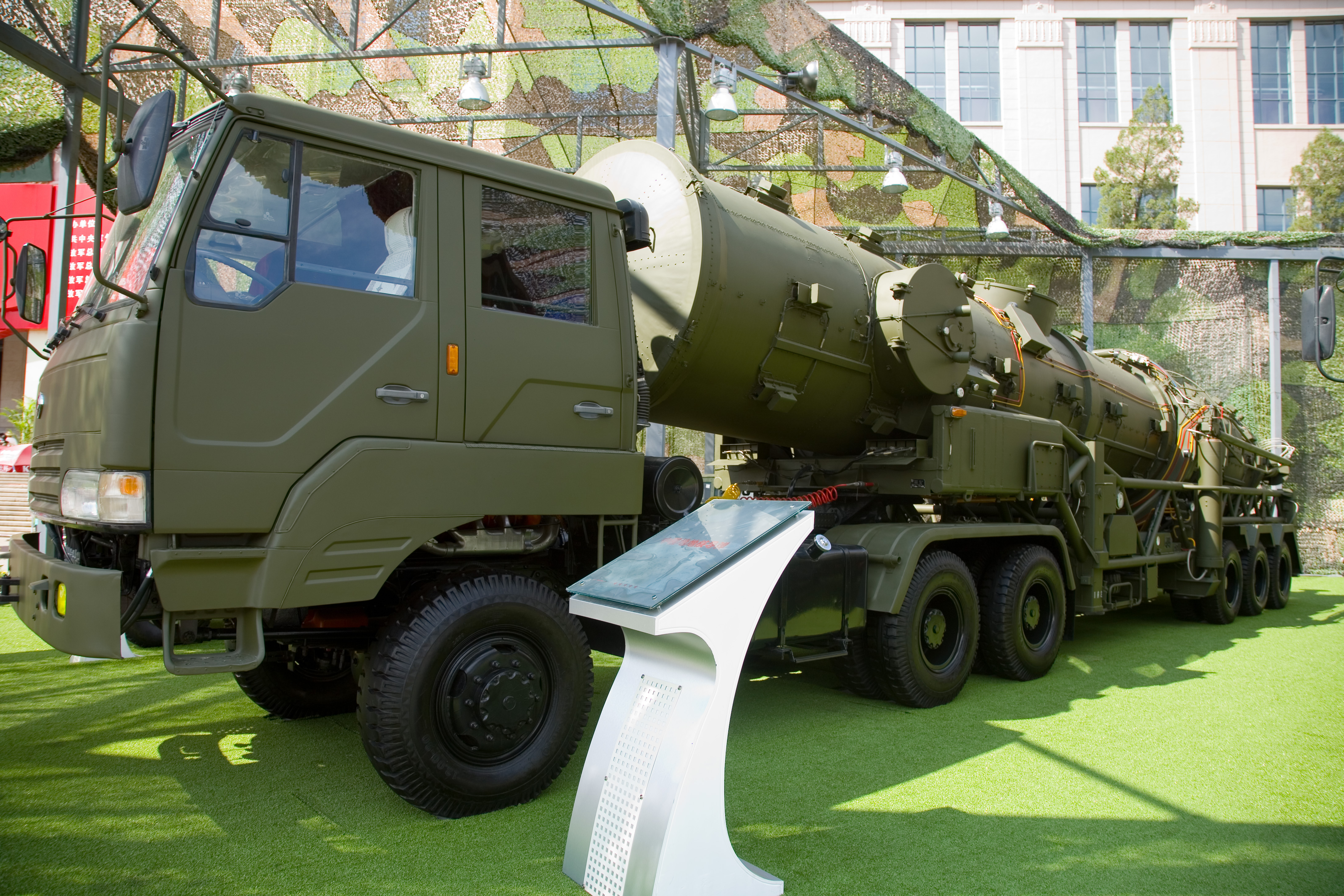Dongfeng-21(DF-21)
| Name | Dongfeng 21(DF-21/CSS-5) |
|---|---|
| Image |  |
| Country of origin | China |
| Variants | DF-21 (CSS-5) DF-21A (CSS-5 Mod 2) DF-21B (CSS-5 Mod ) DF-21C (CSS-5 Mod 4) DF-21D (CSS-5 Mod 5) (Anti-ship ballistic missile) DF-21E (CSS-5 Mod 6) KF-21 (CH-AS-X-13) (Air-launched ballistic missile)(speculated) |
| Type | Medium-Range Ballistic Missile (MRBM) Intermediate-Range Ballistic Missile (IRBM) |
| Range | 1770 km (DF-21/DF-21A) 1700 km (DF-21C) 1500 km (DF-21D ASBM) |
| Max altitude | Not known |
| Length | 10.7 m (DF-21) |
| Diameter | 1.4 m (DF-21) |
| Fin span | Unknown |
| Mass | 14700 kg |
| Warhead | 600 kg, 1 or 5-6 MIRV, Nuclear (DF-21/DF-21A/DF-21E) Cnventional (DF-21C/DF-21D) |
| Warhead yield | 300-500 kt (NNuclear) |
| Max Speed | Mach 8-10 |
| Propulsion | Solid fuel |
| Engine | Dual stage rocket motor |
| Guidance | Inertial navigation system and terminal active radar guidance and BeiDou Navigation Satellite System (DF-21B) |
| Launch platform | Road-mobile transporter erector launcher |
| Service period | 1991-Present DF-21 (CSS-5) 1996-Present DF-21A (CSS-5 Mod 2) 2006-Present DF-21C (CSS-5 Mod 4) 2006-Present DF-21D (CSS-5 Mod 5) 2016-Present DF-21E (CSS-5) |
| Accuracy | CEP:700 m (DF-21) CEP:50 m (DF-21A) CEP:10 m (DF-21B) |
| Description | The Dongfeng-21 (DF-21), often referred to by its NATO reporting name CSS-5, represents a cornerstone of China’s intermediate-range ballistic missile (IRBM) capabilities and a symbol of its evolving strategic power. Emerging from the earlier DF-2 series, the DF-21 marked a significant leap forward in missile technology for China, transitioning to solid-fueled propulsion for enhanced mobility and quicker launch times. This solid-fuel characteristic gives the DF-21 a crucial advantage in responsiveness and reduces its vulnerability compared to older liquid-fueled systems. The DF-21 family has undergone continuous development, spawning various iterations, most notably the DF-21D, which gained global attention as the world’s first credible anti-ship ballistic missile (ASBM). This ASBM variant is specifically designed to target aircraft carriers at sea, posing a significant challenge to traditional naval power projection and shaping anti-access/area denial (A2/AD) strategies. With ranges estimated to extend beyond 1,500 kilometers, depending on the variant, the DF-21 places a substantial portion of the Asia-Pacific region within its reach, impacting strategic calculations for numerous nations. Guidance systems for the DF-21 are believed to incorporate inertial navigation, potentially supplemented by terminal guidance for increased accuracy, particularly crucial for the demanding task of hitting moving naval targets. While primarily designed for conventional warheads, the DF-21’s capabilities are inherently dual-use, allowing for both conventional and potentially nuclear payloads, adding to its strategic weight. The DF-21’s road-mobile launch platforms further enhance its survivability, making it more difficult to locate and neutralize preemptively. Its emergence and continued refinement underscore China’s commitment to developing sophisticated missile technologies to bolster its regional influence and deter potential adversaries. |
| Website | NA |
Disclaimer: This information is based on publicly available sources and should be considered for general knowledge purposes only.